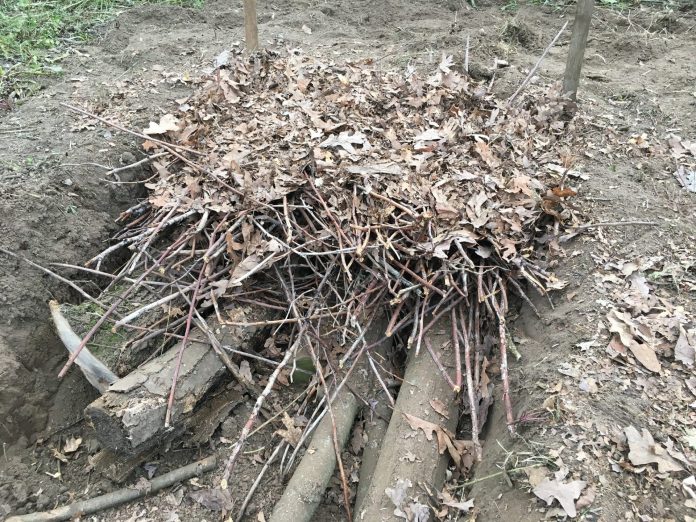
By Melinda Myers
Fall is filled with preparing gardens for the following season, raking leaves, and harvesting. Use plant trimmings and fall leaves to create raised beds and a quality planting mix without disturbing the existing soil. When you minimize or eliminate tilling, you’ll increase organic matter in the soil, maintain and over time improve soil health and structure, save water, and boost plant growth.
This no-dig gardening technique employs sheet composting, also known as lasagna gardening, to create planting beds. Plant trimmings are used to create multi-layered beds like you would when building a compost pile. The mixture used is not as precise and you do not turn it like you would a compost pile.
Start your lasagna garden by measuring and marking the garden bed. Edge the outline of the garden bed, if needed, to slow the infiltration of the surrounding grass and weeds. Cut any grass and weeds in this area very short and cover with moist newspaper or cardboard to smother these unwanted plants. The grass, weeds, and paper layer will eventually decompose adding organic matter to the soil.
Sprinkle a layer of compost over the initial layer, if needed, to hold the newspaper or cardboard in place. Top this with four to ten inches of plant trimmings such as fall leaves, plant-based kitchen scraps, herbicide-free grass clippings, straw, or other similar materials. Sprinkle a low nitrogen, slow-release fertilizer over this layer to feed the microorganisms that will help convert the trimmings to a rich planting mix. Cover with an inch of compost. Repeat the layers, just like making lasagna, until your garden is 18 to 24 inches high.
Fall is a great time to create your beds since you have an abundant supply of the needed ingredients. Or stockpile these ingredients until you have time to build the garden beds. You can plant transplants directly in your lasagna garden bed at the start of the season, even in a freshly built garden bed. Just sprinkle compost or potting mix on top of the beds when planting seeds.
Hügelkultur, or mound gardens, have been used in Germany for many years and take this one step further by placing the garden at a lower elevation and perpendicular to water runoff. The garden can be started in a trench or on the soil surface. Starting the garden below ground captures more stormwater runoff but may require extra tools, equipment or help with digging.
The garden can be any size and height depending on the available materials and your gardening goals. The sides can be steep or more gently sloped which reduces the risk of freshly planted seeds washing out during rainfall.
The bottom layer is made of logs, branches, and fall leaves. Do not include black walnut, which is toxic to many plants, or cedar and black locust which are very slow to decompose. The rotting logs and branches absorb water, making it available to the plants in the garden. As the tree trimmings decompose, they add nutrients to the soil. Research and experience show these woody plant materials do not deprive plants of needed nitrogen. Instead, it will provide the plants with needed nutrients for five to ten or more years.
Next, add the layers of a lasagna garden atop the bottom layer. Then top it all off with several inches of soil.
You can also use these methods to create the planting mix needed to fill raised bed structures. Not only will you save money, but you will put landscape trimmings to work, creating a quality planting mix for growing your favorite vegetables and flowers.
These beds gradually settle but the benefits remain. Add compost or repeat the sheet composting process as needed to maintain the desired depth.
Building a healthy soil foundation is a long-term solution to growing productive gardens with fewer pest problems that require less ongoing maintenance.
Melinda Myers has written more than 20 gardening books, including the recently released Midwest Gardener’s Handbook, 2nd Edition and Small Space Gardening. She hosts The Great Courses “How to Grow Anything” instant video and DVD series and the nationally syndicated Melinda’s Garden Moment TV & radio program. Myers is a columnist and contributing editor for Birds & Blooms magazine and her website is MelindaMyers.com.



